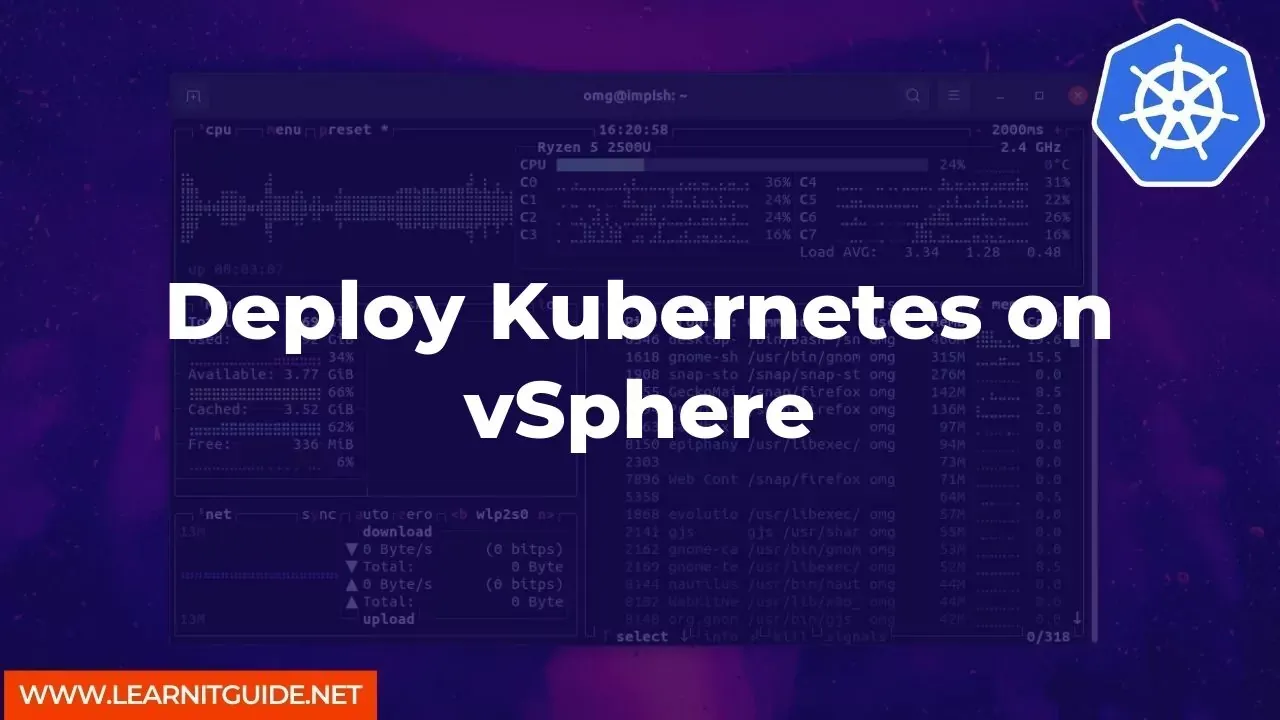Kubernetes has become the standard platform for deploying and managing containerized applications. It enables the orchestration of containers, simplifies management, and makes scaling applications easier. VMware vSphere, on the other hand, is a popular virtualization platform that enables organizations to create and manage virtualized infrastructure.
In this article, we will explore how to deploy Kubernetes on vSphere, allowing you to take advantage of the best of both worlds.
Step 1: Prepare Your Environment
Before you begin, ensure that you have a vSphere environment set up and running. You will need to have vSphere installed, and you will need to have a minimum of three ESXi hosts available. Additionally, you will need to have access to the Kubernetes distribution you wish to use. For this example, we will be using Kubernetes 1.22.
Step 2: Deploy the Kubernetes Control Plane
The first step in deploying Kubernetes on vSphere is to deploy the control plane. To do this, you will need to deploy three virtual machines, each running a Kubernetes control plane component. The components required are etcd, kube-apiserver, and kube-controller-manager. You can use the following commands to deploy these virtual machines:
$ kubectl apply -f https://storage.googleapis.com/kubernetes-the-hard-way/etcd.yaml
$ kubectl apply -f https://storage.googleapis.com/kubernetes-the-hard-way/kube-apiserver.yaml
$ kubectl apply -f https://storage.googleapis.com/kubernetes-the-hard-way/kube-controller-manager.yaml
Step 3: Deploy Kubernetes Workers
Once the Kubernetes control plane is deployed, the next step is to deploy Kubernetes workers. These are the virtual machines that will run your containerized applications. You can use the following command to deploy the workers:
$ kubectl apply -f https://storage.googleapis.com/kubernetes-the-hard-way/kube-worker.yaml
Step 4: Verify Your Deployment
To verify that your deployment is working correctly, you can use the following commands:
$ kubectl get nodes
This command should return a list of the nodes in your Kubernetes cluster. You can also use the following command to verify that your pods are running correctly:
$ kubectl get pods --all-namespaces
This command should return a list of all pods running in your Kubernetes cluster.
Step 5: Deploying Applications
Once your Kubernetes cluster is up and running, you can deploy your applications using Kubernetes manifests. These manifests define the desired state of your application, and Kubernetes will automatically handle the deployment and scaling of your application based on these manifests.
For example, the following manifest will deploy a simple Nginx web server:
apiVersion: apps/v1
kind: Deployment
metadata:
name: nginx
spec:
replicas: 3
selector:
matchLabels:
app: nginx
template:
metadata:
labels:
app: nginx
spec:
containers:
- name: nginx
image: nginx:latest
ports:
- containerPort: 80
You can apply this manifest using the following command:
$ kubectl apply -f nginx.yaml
Deploying Kubernetes on vSphere is a great way to take advantage of both technologies. It enables you to deploy and manage containerized applications at scale while using vSphere to provide the underlying virtualized infrastructure. By following the steps outlined in this article, you should be able to get your Kubernetes cluster up and running quickly and easily.
Related Searches and Questions asked:
That's it for this post. Keep practicing and have fun. Leave your comments if any.








0 Comments